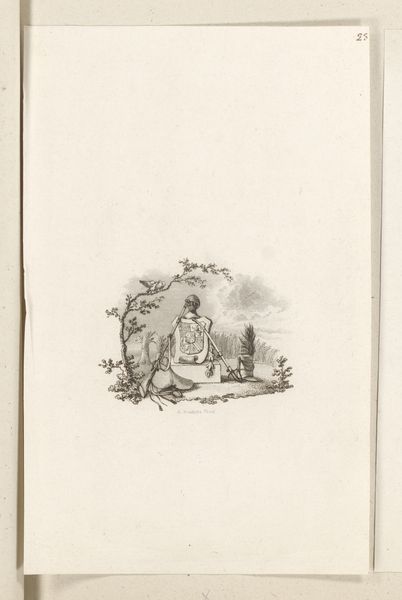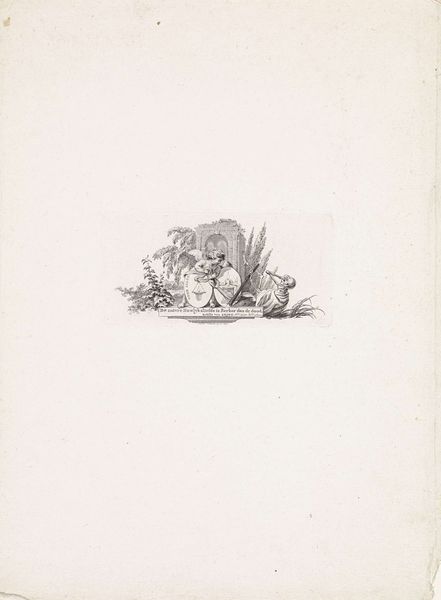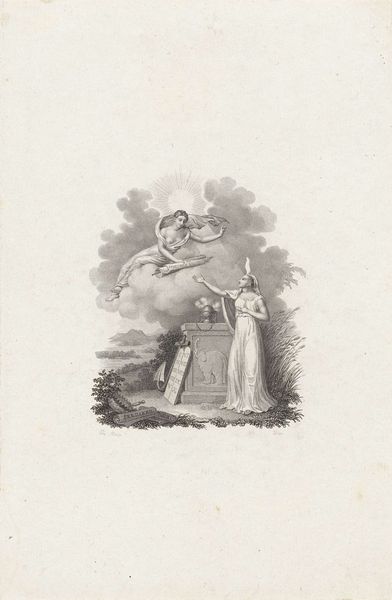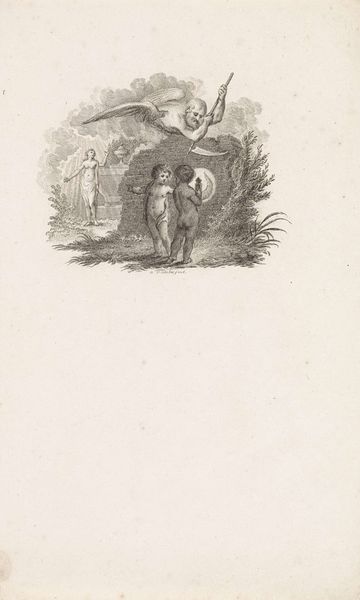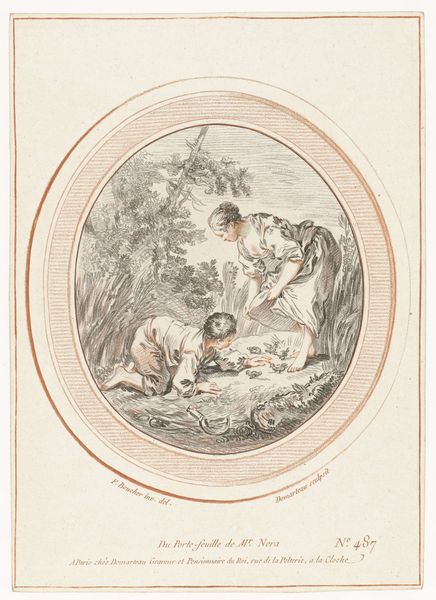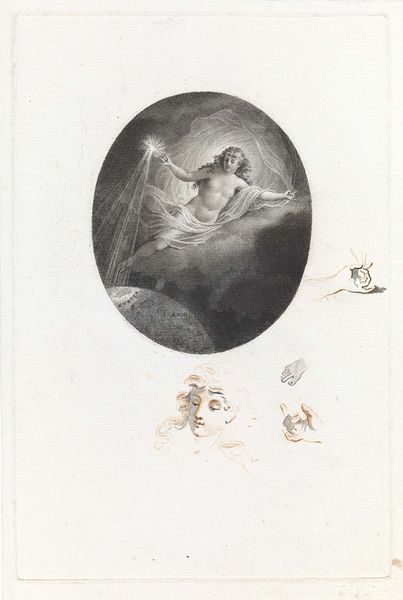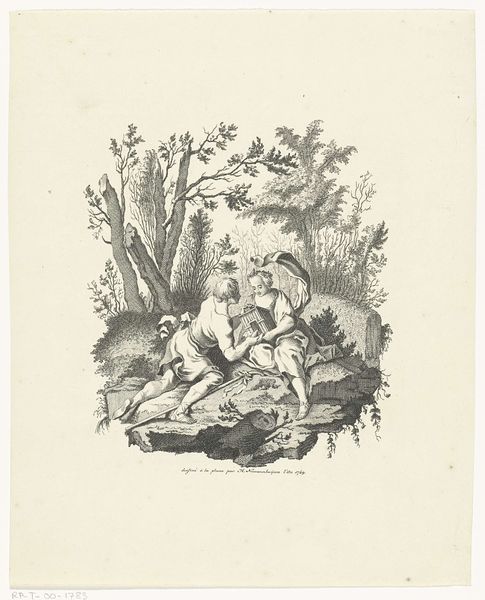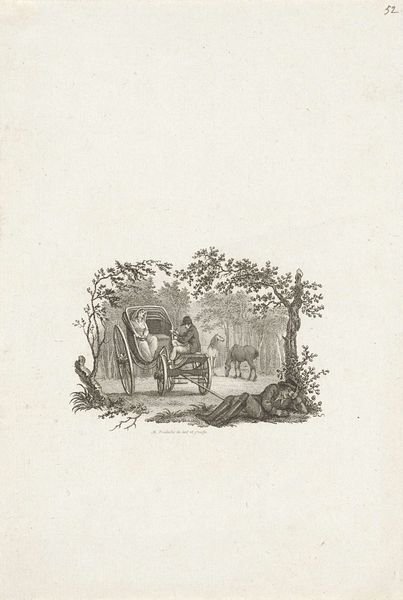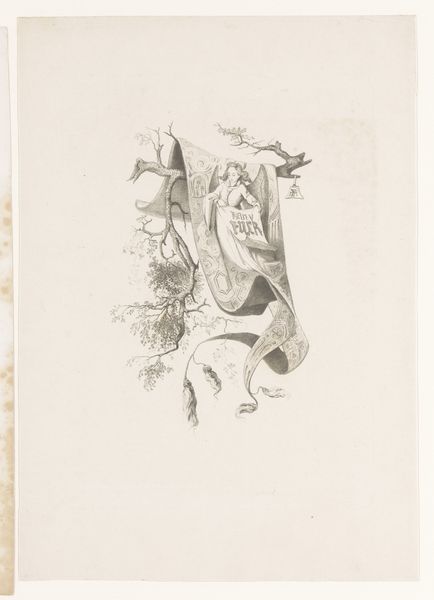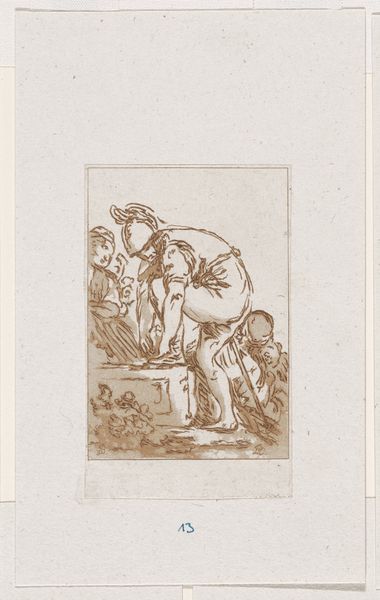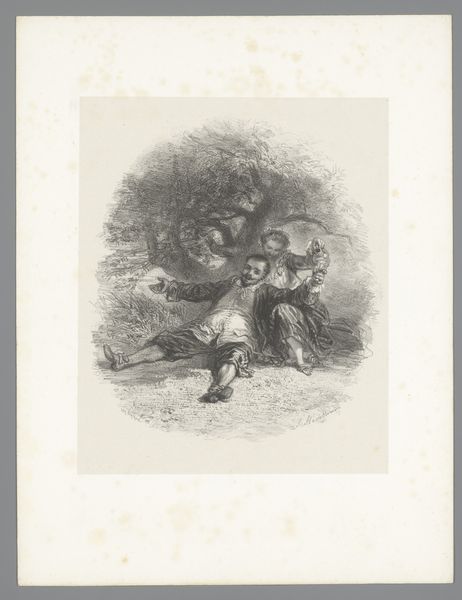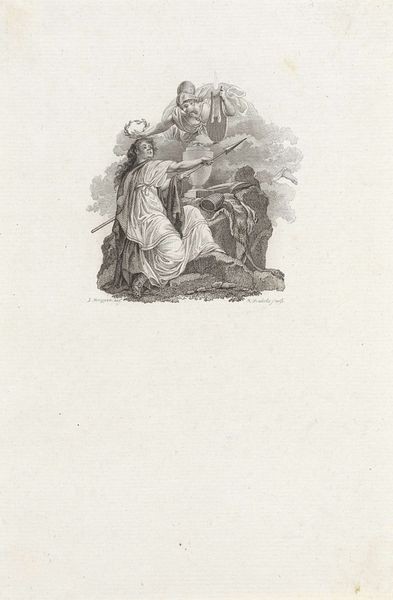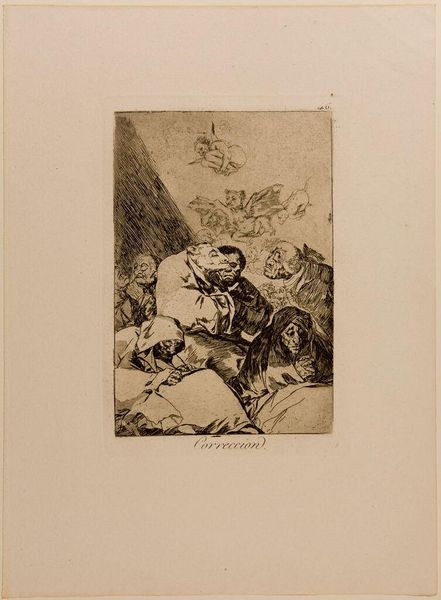
print, engraving
#
neoclacissism
#
allegory
# print
#
old engraving style
#
classical-realism
#
figuration
#
personal sketchbook
#
line
#
sketchbook drawing
#
history-painting
#
sketchbook art
#
engraving
Dimensions: height 237 mm, width 156 mm
Copyright: Rijks Museum: Open Domain
Curator: It’s a strikingly austere composition. What’s your initial reaction to it? Editor: Somber, undeniably. The figures are etched with such fine lines, it feels almost like witnessing a moral argument unfold in whispers. Curator: Indeed. We’re looking at a print from 1798, made by Reinier Vinkeles. It's titled "Titelpagina voor: Salchli, 'Het Kwaad'" or, in English, "Title page for: Salchli, 'The Evil'." Editor: The engraving certainly captures a sense of "evil," or at least a struggle against it. Is that an allegorical figure being assailed by… is that supposed to be Time? Curator: Quite possibly. Note the scythe—a potent symbol of Time's inevitable dominion, and its ever-present threat of evil acts. The winged figure pointing towards the woman, her desperation etched onto her face... it all reads like a visual morality play. Editor: I'm drawn to the figure perched on the orb—is that supposed to be divine justice, overseeing this earthly turmoil? Curator: Precisely! Vinkeles is employing a familiar neoclassical visual language. The figures are idealized, but their gestures speak volumes about human vulnerability and the struggle between good and evil. What's particularly fascinating is how this engraving might have been received amidst the political upheavals of the late 18th century. Editor: Do you see it referencing any contemporary events? Perhaps anxieties of the revolutionary era reflected in symbolic form? Curator: The allegory is left intentionally vague, its message more emotional and subjective than strictly historical, its power lies precisely in this interpretative openness. Editor: Vinkeles seems to have expertly used stark linearity, starkly contrasting with the theme, though… quite unnerving actually. Curator: These are the nuances that ensure it remains resonant across centuries. The ambiguity of its historical placement encourages timeless reflection on fundamental human struggles. Editor: Absolutely. Thank you for offering this view, especially on a picture filled with symbols I missed. Curator: It’s my pleasure. And that, after all, is what truly excites me about art—the potential to unlock meaning beyond surface aesthetics.
Comments
No comments
Be the first to comment and join the conversation on the ultimate creative platform.
